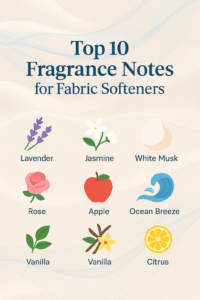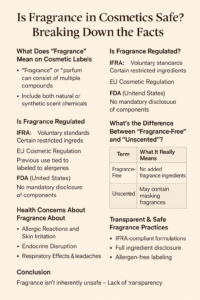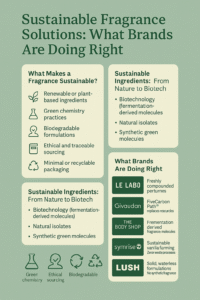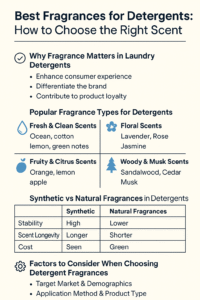🧪 The Science of Microencapsulated Fragrances in Cleaning Products
How Advanced Scent Technology Delivers Long-Lasting Freshness
🔍 Introduction: Why Fragrance Longevity Matters
In today’s highly competitive cleaning products market, fragrance is more than just a pleasant addition—it’s a key factor in consumer satisfaction and brand loyalty. Customers don’t just want their laundry or home to smell fresh immediately after cleaning; they expect that freshness to last for days, sometimes weeks.
This is where microencapsulated fragrance technology becomes essential. It extends scent longevity, improves performance, and enhances the user experience in a way traditional fragrances simply cannot.
🔬 What Is Microencapsulation?
Microencapsulation is the process of enclosing tiny droplets of fragrance oil within microscopic capsules. These capsules typically range from 10 to 100 microns in size and are made of polymer or biodegradable shells that protect the fragrance until a specific trigger—such as friction, heat, or moisture—breaks them open.
The result: a controlled, slow, and targeted release of scent that can last well beyond the product’s initial application.
🚿 How Microencapsulated Fragrances Work
🛠️ Mechanism of Action:
- Friction Activation: When fabrics are rubbed (during wear, folding, or drying), the capsules rupture and release scent.
- Heat Activation: Heat from ironing, drying, or body warmth can cause microcapsules to expand and burst.
- Time-Release: Some capsules degrade slowly over time, providing a background scent for days or weeks after application.
🛡️ Core Benefits:
- Protects volatile fragrance components from evaporation and oxidation.
- Ensures fragrance stability during product manufacturing, storage, and use.
- Provides multi-phase scent release: immediate, moderate, and long-term.
✅ Benefits Over Traditional Fragrances
| Traditional Fragrances | Microencapsulated Fragrances |
|---|---|
| Fast evaporation | Controlled, slow release |
| Short-lived scent | Long-lasting fragrance |
| Sensitive to heat/pH | Stable in diverse conditions |
| More fragrance needed | Reduced quantity, better impact |
➕ Additional Benefits:
- Enhanced consumer perception of “premium” products.
- Ability to customize scent release profiles (e.g., quick burst + long tail).
- Cost-effective over the product lifecycle.
🏗️ Materials & Chemistry
🔬 Shell Composition:
- Synthetic Polymers: Melamine-formaldehyde, urea-formaldehyde, acrylic resins.
- Biodegradable Materials: Gelatin, alginate, chitosan, starch-based polymers (emerging trend).
💧 Core Material:
- Highly concentrated fragrance oils, sometimes mixed with fixatives or solvents.
🚀 Emerging Technologies:
- Nanoencapsulation: For ultra-fine, invisible fragrance delivery.
- Multi-layer Capsules: Offering sequential fragrance release stages.
- Eco-Friendly Shells: Bio-based, compostable, or marine-safe materials responding to microplastic concerns.
🧺 Applications in Cleaning Products
- Laundry Detergents: Long-lasting freshness from wash to wear.
- Fabric Softeners: Microcapsules cling to fibers for sustained scent release.
- Surface Cleaners: Capsules burst during wiping, releasing fresh scents into the air.
- Floor Cleaners: Delivers lingering freshness after mopping.
- Personal Care (Hybrid): Some shampoos and body washes use microencapsulated fragrances for prolonged effects.
🚩 Real-World Examples:
- Downy Unstopables™: In-wash scent boosters using friction-activated capsules.
- Comfort™ Fabric Softener: Offers “24-Hour Long-Lasting Freshness” with microcapsule technology.
- Method™ Surface Cleaner: Utilizes plant-based microcapsules for burst-on-wipe freshness.

♻️ Sustainability: The Future of Fragrance Encapsulation
As environmental concerns over microplastics grow, the fragrance and cleaning industries are innovating:
- Bio-based Shells: Made from renewable sources like starch, cellulose, or alginate.
- Marine-Safe Capsules: Designed to degrade safely in aquatic environments.
- Legislative Pressure: EU and global regulations are pushing for the elimination of non-degradable microplastics by 2030 in consumer goods.
- Green Encapsulation Techniques: Reduced energy processes, solvent-free production, and compostable designs are becoming industry standards.
✅ Conclusion: The Invisible Science Behind Lasting Freshness
Microencapsulated fragrance technology represents a powerful fusion of chemistry, materials science, and consumer psychology. For manufacturers, it’s not just about adding fragrance—it’s about crafting a sensory experience that endures long after the product has been used.
As sustainability demands grow and consumers expect more from their products, microencapsulation is not just the future—it’s the present of fragrance in cleaning.
📚 Sources:
- IFRA (International Fragrance Association) Technical Publications, 2024
- Mintel Cleaning Product Innovation Report, 2023
- Dow Chemical Microencapsulation White Paper, 2022
- Firmenich Sustainable Fragrance Solutions, 2023
- Euromonitor Household Cleaning Trends, 2024




